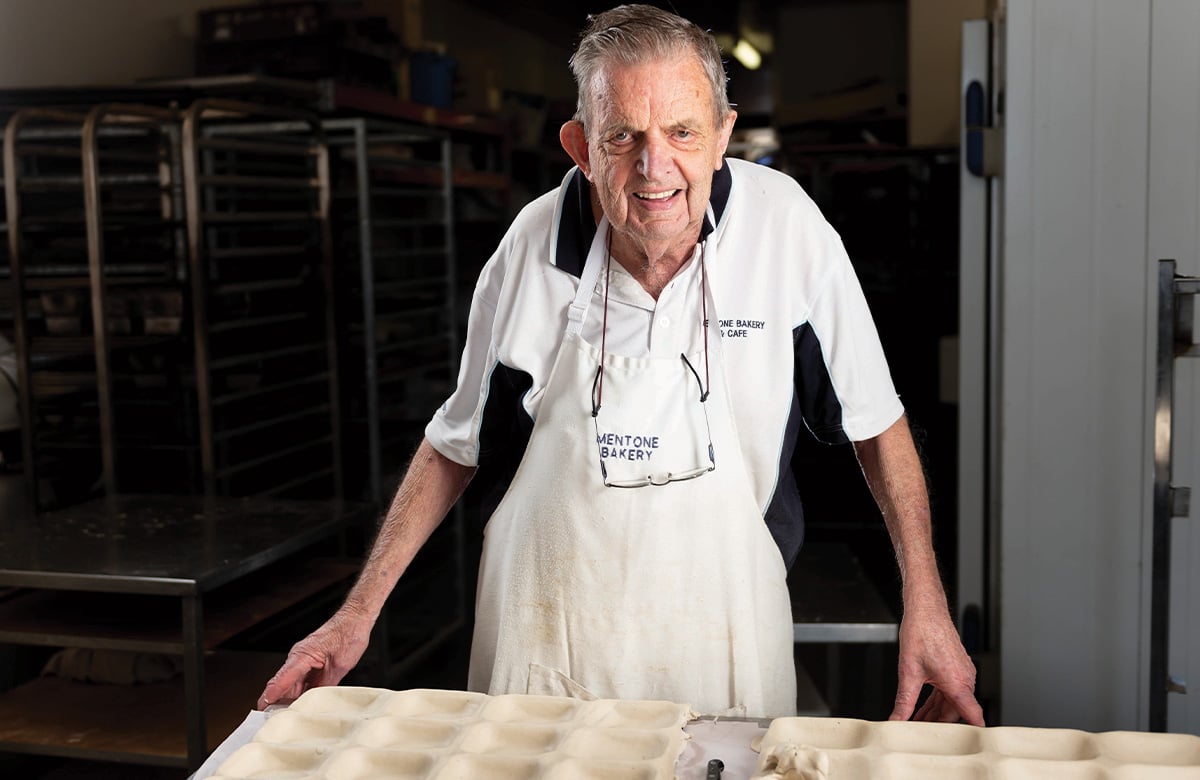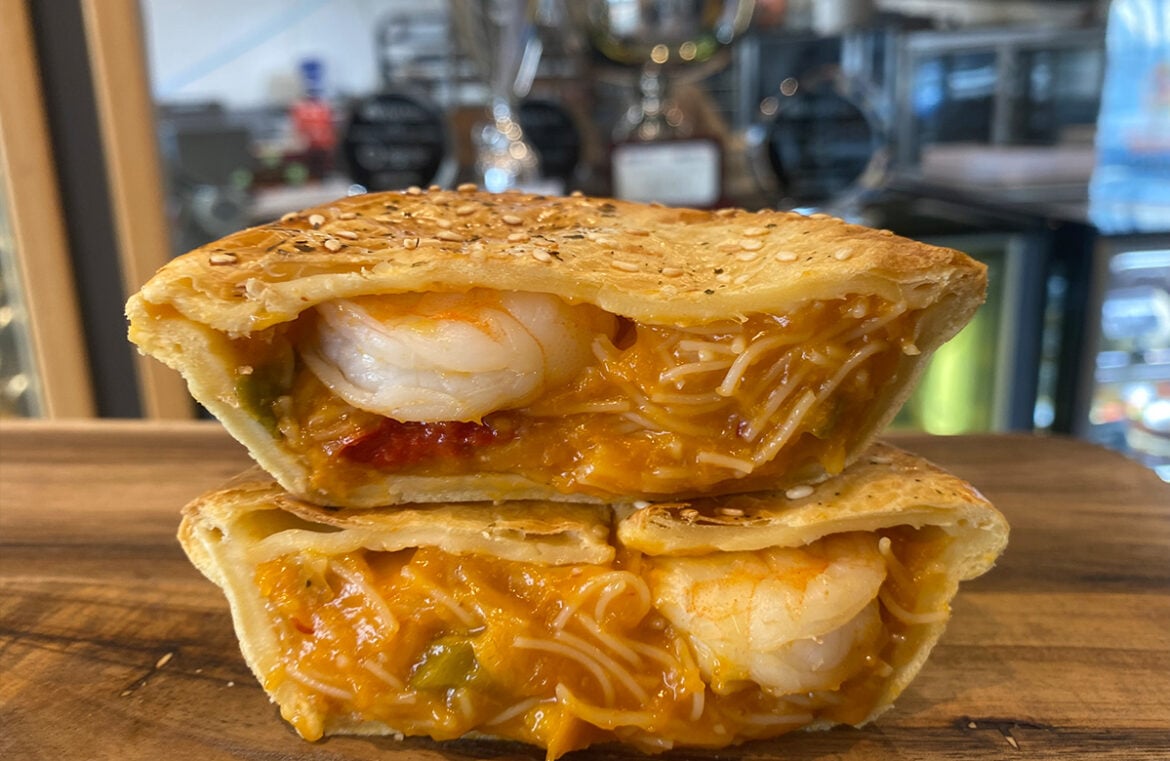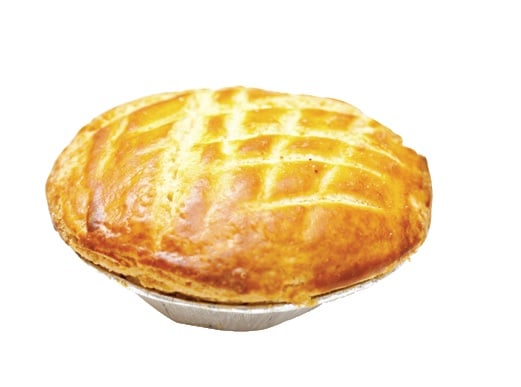When asked to name a quintessentially Australian bakery item, there are a few that come to mind. Topping that list, however, is often the humble meat pie. It’s an item that is found on bakery shelves right across Australia but remains something of an unknown quantity outside our shores. But where – and when – did this bakery classic originate? Let’s explore the history of the meat pie.
When you mention a meat pie the image conjures up crisp, flaky pastry wrapped around a delicious savoury filling.
Long considered Australian culinary icon, it can be surprising to discover the meat pie’s history actually extends all the way back to the Ancient Egyptians, Greeks and Romans.
When inspecting ancient drawings along the walls of Egyptian tombs – in particular that of Ramses II located in the Valley of the Kings – historians came across what appeared to be depictions of pies.
References to pies were also made in Ancient Greek and Roman texts. It’s thought the Romans carried the concept home after sampling them in Egypt. These predecessors, however, were a far cry from the pies we know today.
The Greeks are thought to have used a flour-water paste resembling pie pastry that was then filled with meat. These were sealed and then fried or cooked under coals. The Romans adopted these creations, using a variety of meat, oysters, mussels and fish as filling and a combination of flour, oil and water for the crust. Vitally though, this pastry was not meant to be eaten and was instead discarded.
By Medieval times, the use of pastry as a way to preserve meat had been well established, after the idea travelled throughout Europe via Roman roads.
Brisbane-based food historian and author of Pie: A Global History Dr Jane Clarkson told The Courier Mail that this was partly because there were no metal baking dishes or ways to keep food fresh.
“The pastry was used as both a cooking container and a preserver,” she said.
“Called a ‘coffin’ it was made with very hard rye flour up to seven inches thick and wrapped around the meat and baked. This could preserve meat for up to a year.”
Dr Clarkson said the rock-hard pastry was then either given to the poor or crumbled up in the kitchens of the rich and used to thicken soups.
By the 14th century the name ‘pye’ or ‘pie’ had entered the vernacular, with even British writer Geoffrey Chaucer writing in Canterbury Tales that a cook, “koude rooste, and seethe, and broille, and frye / Maken Mortreux and wel bake a pye”.

One of Country Cob Bakery’s pies
A new era
For centuries pies remained the domain of the wealthy, however in Victorian times this began to change.
Dr Clarkson said previously only the wealthy had ovens, which had helped to keep the pie as an upperclass food item.
“It wasn’t until Victorian times that the pie became street food and popular fare among all classes,” she said.
It’s said British settlers brought the pie with them to Australia during the 18th century, although the first meat pies were simple fare often made of a pastry crust that was filled with meat and gravy.
Considered an easily portable meal for workers, the meat pie as we know it soon became a culinary staple.
Dr Clarkson said another reason for their rise in popularity was due to the ease of access to many of the vital ingredients.
“Pies could only be made in countries that had wheat and dairy or pork,” she said.
“With the focus firmly on meat and a low priority for vegetables, as well as being able to make them out of just about any meat [meant] it was the perfect settler food,” she said.
The evolution continues
These days meat pies are an Australian bakery staple with options ranging from the classic meat and gravy to the more adventurous varieties that incorporate seafood and curries – and even roadkill.
Melbourne-based industry stalwart Bill Fuller raised eyebrows when he made and then entered a roadkill meat pie into the Great Aussie Pie Competition. Made with toad and roadkill that had been cooked with garlic, onion, spices and tomato, Worcestershire and soy sauces, as well as “roadkill stock”, Bill said it was a tongue-in-cheek joke pie when speaking with Baking Business back in 2019.

Bill Fuller
“It’s hard to keep a straight face when talking about it to people because you’re taking the mickey out of them,” he said.
“It’s just, shall we say, a standing joke in the industry.”
Ryan Kuhn and his brother, Chan, head up award-winning Country Cob Bakery in Kyneton, Victoria, and have a slew of trophies – more than 350 to be exact – under their belts including most recently the 2024 Poultry Pie and Gourmet Pie awards from the Australia’s Best Pie and Pastie Competition.
Beyond focusing on using high quality ingredients, a large part of the duo’s success is also their ability to think outside the box to regularly come up with new concepts for their pie range.
Ryan said when he and Chan first relocated to Australia from Cambodia they noticed in each bakery they visited the meat pies were often limited to a few staple flavours.
“They were very traditional. You couldn’t find lots of flavour on the menu. Everywhere we went we saw pretty much those flavours like a plain meat pie or cheese and bacon,” Ryan said.
“I always said ‘why?’ to Chan. I got a meat pie because I didn’t know what a pie was. But [after trying it] I thought it was a bit boring. It just didn’t tick all the boxes for me.”
When Ryan and Chan opened Country Cob Bakery they decided to do things a bit differently. They instead drew on their experiences of cooking in the kitchen with their mother as well as favourite dishes from Cambodia, Malaysia and Singapore and began to incorporate these non-traditional but highly flavoursome fillings into their pie creations.
It was a novel concept, but one that worked.
“We said, ‘all right let’s do something a bit different’. Then two or three years after we opened the shop in Kyneton we started to invent a few different flavours,” Ryan said.
“The first pie award we won was for our satay seafood pie, which was very unusual.
“Now we bring our Cambodian dishes and put them into a pie. Whatever we know – we love Malaysian food, Singaporean food, Thai, Vietnamese – whatever we can think of. If we think this will make a good pie filling then we start playing with it.”

Ryan and Chan Kuhn from Country Cob Bakery
Nathan Williams from Rolling Pin Pies and Cakes – 2024 Best Pie award winner – agrees with this, saying inspiration for the new, more creative generation of pies can come from many places – but rarely from a recipe book.
“The fun part is adapting a meal you might eat for lunch or dinner or even breakfast, balancing and intensifying the flavours and wrapping them up in pastry,” he said.
“Inspiration can come from walking through the supermarket, browsing the menu at a restaurant or a magazine. Customers and friends are an infinite source of new flavour suggestions – some amazing, some not so amazing.”
Part of the constant innovation when it comes to pies that we’ve been seeing in recent years, Nathan said, came down to humans being hardwired to create although annual national pie competitions have also played their part.
“[Creating] is an innate human desire. Food is an amazing creative outlet. It’s just fun to seek out new ingredients and play around with new and exciting flavour combinations,” he said.
“Competitions like Australia’s Best Pie Competition have definitely played a big part inspiring the industry to push the boundaries, and was certainly the catalyst and continues to be an inspiration for me to create different and amazing flavours.
“Judges want to see innovation and that expectation increases each year, so if you want to win a gold medal, a major category or an overall title you have to keep pushing yourself and thinking outside the box.”
Maintaining the classic

Nathan Williams
Despite regularly capturing the imagination of bakers across Australia, there are a few elements of meat pies that remain the same: that is sourcing high quality ingredients for fillings, ensuring the pastry is perfect and that the two are able to meld together.
For Nathan he said the process begins with great pastry that has just the right amount of puff and flakiness.
“We’ve always adopted a ‘thin on pastry, big on meat’ philosophy. That way we can ensure the pastry is cooked all the way through, but mostly because we know the filling is the real hero,” he said.
“Fillings need to be super flavoursome. A pie is no place for subtlety when it comes to seasoning. If you haven’t got a few people saying it’s too salty, then it’s probably under seasoned. I think that’s why Asian-inspired pies like our prawn laksa are becoming very popular. They’re sweet, salty, sour, spicy – hitting all the senses with an intense flavour punch.”
Ryan agreed with this, adding that a good filling and quality pastry didn’t always guarantee a great pie. Rather, the two had to be able to meld together flavour-wise.
“Sometimes you have a very good pastry and then your filling isn’t that great, but when it’s combined together it tastes a lot better,” he said.
“When we do a tasting first we try to the filling and go ‘oh this is good’, then put it in the pie and we bite it together to see whether it works well or not. They have to complement each other and have to go well together to make a good pie.”






COMMENTS